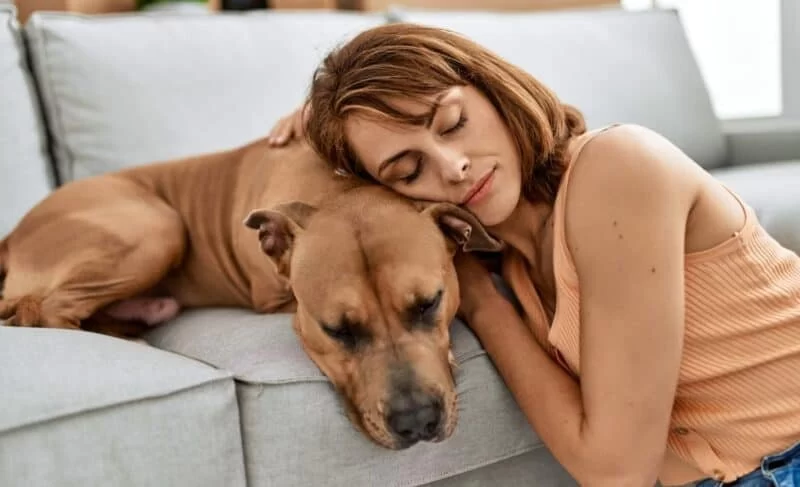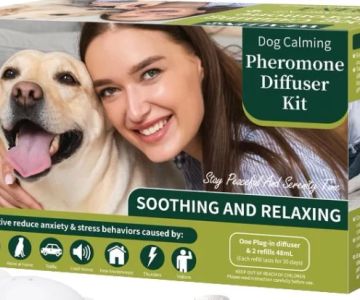Understanding Severe Anxiety in Pets
Severe anxiety in pets is more common than many owners realize. Dogs may pace, pant, or bark excessively, while cats may hide, overgroom, or refuse food. These signs often stem from triggers such as separation, loud noises, or past trauma. Unlike mild nervousness, severe anxiety can disrupt a pet’s daily life and even lead to health issues. Recognizing the difference between occasional stress and chronic anxiety is the first step in finding effective solutions. Pet owners in the United States increasingly seek professional help because untreated anxiety can impact a pet’s overall well-being.
1. Creating a Safe and Predictable Environment
Designated Comfort Zones
One of the best ways to comfort a pet with severe anxiety is by creating a designated safe space. This can be a quiet room with dim lighting, soft bedding, and familiar toys. For dogs, adding an item that smells like their owner—such as a worn T-shirt—provides reassurance. Cats often benefit from vertical spaces like cat trees or covered nooks where they can retreat. The key is consistency: when anxiety spikes, your pet should know exactly where to go to feel secure.

286 Wilmington West Chester Pike, Chadds Ford, PA 19317, USA
See DetailsEstablishing Routines
Pets thrive on predictability. Feeding, walking, and playtime should occur at regular intervals. A structured routine reduces uncertainty, which is often a major trigger for anxious behavior. Owners in busy households can use feeding timers or automatic pet feeders to help maintain consistency. Over time, the predictability of daily life acts as a natural stress reliever.
2. Behavioral Training and Positive Reinforcement
Gradual Desensitization
For pets with separation anxiety or fear of loud noises, gradual exposure combined with positive reinforcement can be highly effective. For example, if a dog panics when left alone, start by stepping out of the room for short intervals and rewarding calm behavior. Over days or weeks, increase the duration. Cats with noise sensitivity can be slowly introduced to low-level sounds, with treats provided during calm reactions. The goal is to reframe anxiety-inducing triggers into neutral or even positive experiences.
Professional Training Support
In severe cases, working with a certified trainer or behaviorist is invaluable. These professionals can tailor training methods to your pet’s specific triggers. Many success stories highlight dogs who once couldn’t be left alone for five minutes eventually staying calm for hours after proper guidance. Positive reinforcement builds trust and resilience, allowing pets to adapt more comfortably to stressful environments.
3. Physical Activity and Mental Enrichment
Daily Exercise
Exercise is one of the most underrated solutions for pet anxiety. Dogs benefit from regular walks, fetch games, or agility activities, while cats enjoy chasing feather toys or interactive laser sessions. Physical exertion reduces excess energy that often manifests as nervous pacing or destructive chewing. In the U.S., dog parks and pet-friendly trails provide excellent outlets for anxiety-prone pets.
Enrichment Toys and Puzzles
Mental stimulation is equally important. Puzzle feeders, treat-dispensing toys, and scent-based games challenge the mind and prevent boredom, which often worsens anxiety. For cats, food puzzles or window perches overlooking bird feeders can provide hours of distraction. When pets are engaged mentally, they are less likely to dwell on stress triggers.
4. Calming Products and Natural Remedies
Comfort Tools
Products like weighted anxiety vests, calming collars, or pheromone diffusers can make a significant difference. For instance, a popular anxiety vest applies gentle pressure around a dog’s torso, mimicking the sensation of a hug. Cats may respond well to pheromone sprays that replicate natural calming scents. These tools do not cure anxiety but can reduce its intensity, especially during thunderstorms or fireworks.
Natural Supplements
Veterinarian-approved natural remedies such as chamomile, valerian root, or CBD for pets are gaining popularity in the U.S. These supplements may provide relief without the need for prescription medications. However, pet owners should always consult with a veterinarian before introducing new products to ensure safety and appropriate dosage. For trusted recommendations, many pet parents turn to resources like Hidden Brook Veterinary for guidance on safe anxiety relief options.
5. Veterinary Guidance and Medical Support
Professional Diagnosis
Sometimes, anxiety masks underlying health problems such as thyroid imbalances or chronic pain. A veterinarian can perform a thorough checkup to rule out medical conditions before addressing behavioral issues. If severe anxiety persists, veterinarians may recommend prescription medications. These can be particularly useful when used in combination with behavioral training.
Ongoing Monitoring
Managing anxiety is rarely a one-time fix. Regular veterinary visits ensure that progress is tracked and adjustments are made as needed. Some pets may require seasonal support, such as during holiday fireworks, while others may need long-term solutions. Building a relationship with a veterinarian who understands your pet’s history is essential for long-term success.
6. Real-Life Stories from U.S. Pet Owners
In Denver, a rescue dog named Max once tore through doors whenever left alone. With gradual desensitization, puzzle toys, and an anxiety vest, Max’s destructive behavior subsided within six months. In New York, a cat named Luna overcame severe noise anxiety through the use of pheromone diffusers and consistent play therapy. These real-life examples demonstrate that while pet anxiety can feel overwhelming, structured approaches truly transform lives. The bond between pets and owners grows even stronger when challenges are overcome together.
7. Building Long-Term Confidence and Trust
The ultimate goal in addressing severe anxiety is to help pets feel safe and confident in their environment. Beyond temporary fixes, consistent care, trust-building, and professional support create lasting change. Patience plays a crucial role, as progress can be slow. However, each small improvement—whether it’s a dog finally resting calmly during a thunderstorm or a cat confidently greeting visitors—marks a victory worth celebrating. For American pet owners, investing time and care into anxiety relief is one of the best ways to nurture the unbreakable bond between humans and their pets.











